Homemade Sourdough Pasta is easy to make and is perfect for using up excess sourdough discard. Made with just 4 simple ingredients, this sourdough discard pasta can be ready in under an hour or left to ferment overnight in the refrigerator.
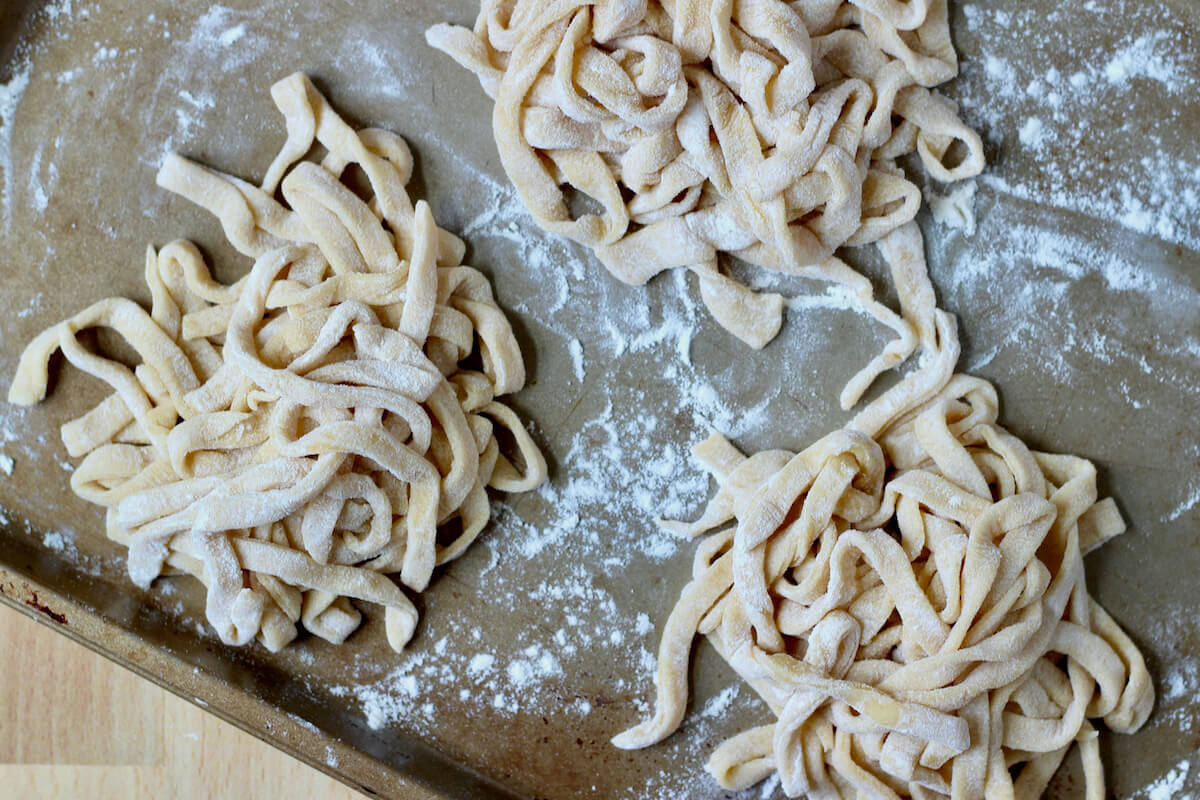
Many people think of fresh homemade pasta as a dish that is only for special occasions. Making pasta at home sounds complicated, especially when grabbing a box of dried pasta off the shelf is so convenient.
I also used to think this way, limiting my pasta-making to holidays like Christmas or Thanksgiving.
But, then I started baking sourdough bread. I found myself with a lot of excess sourdough discard and I needed a way to use it up.
Once I started making sourdough pasta noodles regularly, I realized how easy it is!
Most of the time, I roll out the dough and cut it by hand, eliminating the need for special equipment. Additionally, sourdough pasta dough freezes exceptionally well, making it just as convenient as store-bought pasta.
Now, homemade sourdough pasta is part of my regular cooking routine. I love the flavor, health benefits, and sustainability of making fermented pasta dough at home.
Disclaimer: Some links throughout this post are affiliate links. As an Amazon Associate, I earn from qualifying purchases. You can learn more by visiting my Affiliate Disclosure Page.
What is Sourdough Pasta?
Sourdough pasta is fresh pasta that is made using sourdough starter, which can be either fed or unfed. The sourdough starter adds a unique tangy flavor and can potentially make the pasta easier to digest.
Why Make Sourdough Pasta?
There are many reasons why making sourdough pasta is a good idea.
Not only does it allow you to use excess sourdough discard, but sourdough pasta also tastes delicious and may be easier to digest than regular pasta.
Here are a few of the benefits of sourdough pasta:
- Less Food Waste- By using your sourdough starter discard to make sourdough discard pasta, you're creating less waste and enjoying delicious food.
- Flavorful- Sourdough has a unique, tangy flavor thanks to the naturally occurring yeast and bacteria in the starter. While subtle, sourdough discard noodles have a slightly tangier flavor than traditional dried pasta.
- Digestibility- If you allow the pasta dough to ferment overnight in the refrigerator, the yeast and bacteria have a chance to break down more starches in the flour. This may make sourdough noodles easier to digest than regular pasta.
Why You'll Love This Recipe
- Scratch-Made- There's something so special about making fresh sourdough pasta from scratch. The flavor and texture of homemade pasta are incomparable to commercially-produced dry pasta.
- Uses Sourdough Discard- If you bake a lot of sourdough bread, you're probably always looking for new sourdough discard recipes. Sourdough pasta is a fantastic way to use up a lot of sourdough discard without much effort.
- Ready in 50 Minutes- You can make same-day sourdough pasta in as little as 50 minutes. Just mix the dough, rest for 30 minutes, then cook!
- Only 4 Ingredients- Sourdough starter, flour, eggs, and salt is all you need to make the best sourdough pasta recipe ever.
- Versatile- This easy sourdough pasta dough recipe can be turned into fettuccine, pappardelle, spaghetti, farfalle, lasagna, ravioli, tortellini, and so much more! Pair it with your favorite sauces, proteins, and vegetables for a hearty, homestyle meal.
Ingredient Notes
Here are some notes on the key ingredients. For the full list of ingredients, check out the recipe card below.
- All-Purpose Flour- To keep things simple, I developed this recipe using all-purpose flour since it can be found in most home pantries.
- Sourdough Starter Discard- Both active sourdough starter and sourdough starter discard can be used to make this recipe.
- Eggs- Two whole eggs provide the pasta dough with structure, moisture, and color.
- Egg Yolk- An extra egg yolk adds richness and color.
- Kosher Salt- I prefer to use kosher salt because it doesn't typically contain added ingredients like anti-caking agents and sugar.
🌱 Sustainability Tip: Using sourdough discard is a great way to reduce food waste in your kitchen and make some delicious sourdough discard recipes!

Substitutions and Variations
Here are a few ways you can try customizing this easy homemade sourdough pasta recipe to fit your diet and taste preferences.
Substitutions
- All-Purpose Flour- Tipo 00 flour, bread flour, semolina flour, or whole wheat flour can be used in place of all-purpose flour. If you use whole wheat flour, you may need to add a little water to the dough to achieve the right consistency.
- Sourdough Starter Discard- If you don't have sourdough starter discard, you can add an additional egg or 1-2 tablespoons of water instead.
- Kosher Salt- Swap kosher salt for sea salt, pink Himalayan salt, or table salt.

Variations
- Whole Wheat- Replace some or all of the flour in this recipe with whole wheat flour for healthy, high-fiber homemade pasta.
- Herbed- Mix chopped fresh herbs or dried herbs into the pasta dough while kneading. Try basil, thyme, rosemary, and oregano.
- Spinach- Make green spinach pasta by mixing a small amount of spinach purée into the pasta dough.
- Beetroot- Similarly to spinach pasta, you can mix a small amount of puréed beet into the pasta dough to make pink pasta.
Can I scale this sourdough noodles recipe? Of course! To make more or less sourdough pasta, increase or decrease the ingredient amounts based on how much you want to make.
Equipment Notes
Here are some notes on any special equipment I used to make this recipe.
- Rolling Pin- Most of the time, I just roll my pasta dough out using a tapered wooden rolling pin. It's a low-fuss way to get homemade pasta on the dinner table quickly and easily.
- Pasta Machine- If you make pasta often, consider investing in a pasta machine. Pasta machines can roll your pasta dough into thin sheets for lasagna, ravioli, and tortellini. They also often come with attachments to make fettuccine, spaghetti, and more.
- Kitchen Scale- I always recommend weighing your ingredients when making pasta for the best results. Kitchen scales are relatively inexpensive and come in handy if you make pasta or bread often.
- Pasta Drying Rack- If you plan on drying your homemade pasta, a pasta drying rack is the perfect tool for you. Dry large batches of sourdough egg noodles to store at room temperature for later.
How to Make Sourdough Pasta
Here is how to make sourdough discard pasta.
Step 1: Make flour well. In a large mixing bowl, add the all-purpose flour. Create a well in the center of the flour by pressing the bottom of a measuring cup into it.
Step 2: Add remaining ingredients. Into the well, add the sourdough starter, eggs, egg yolk, and kosher salt.
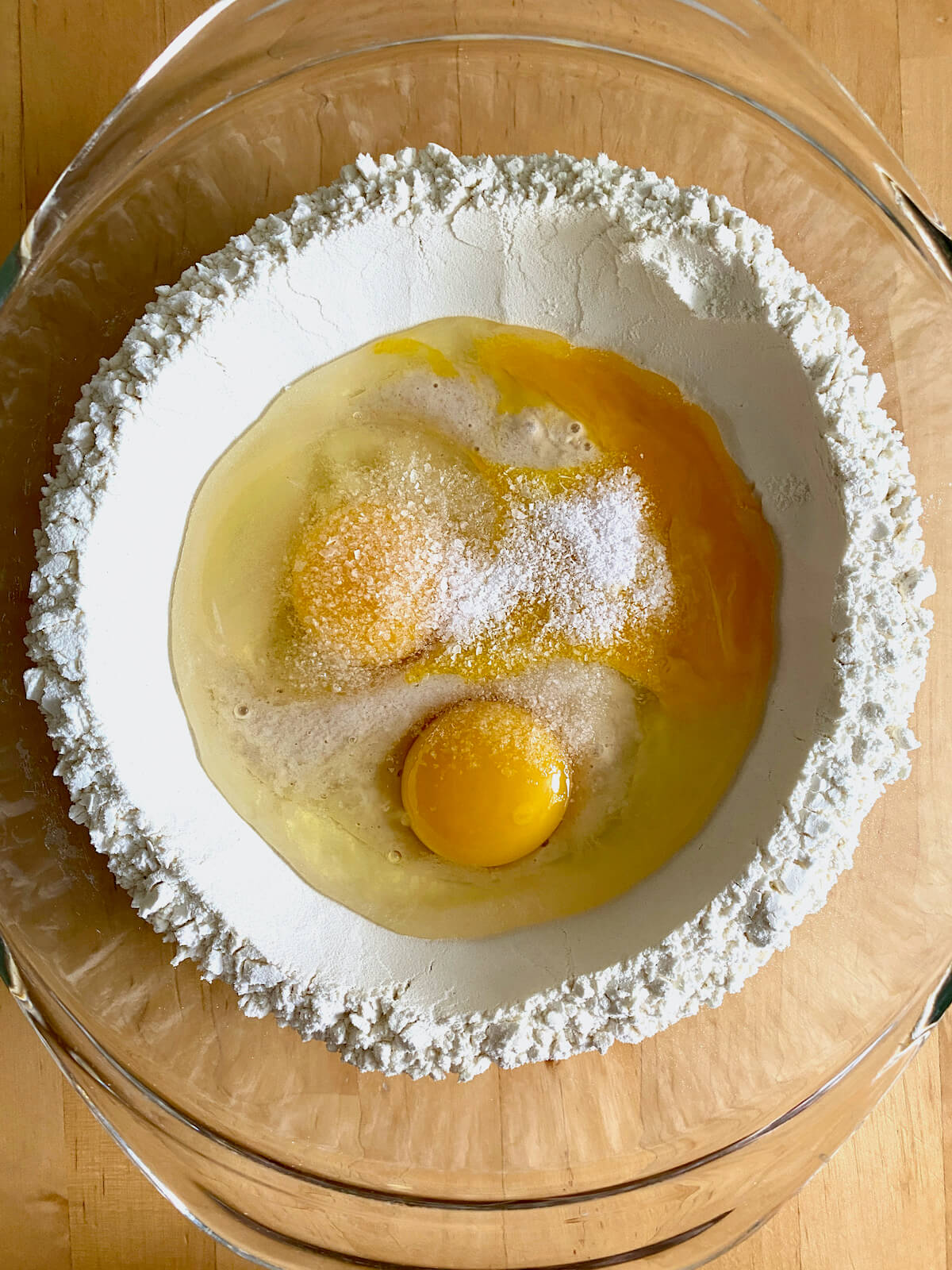
Step 3: Whisk the wet ingredients. Using a fork, start whisking the ingredients in the well, gradually incorporating more flour as you whisk.

Step 4: Transfer dough to work surface. When the dough becomes too stiff to continue whisking with a fork, transfer the dough and the remaining flour onto a clean work surface.

Step 5: Knead the dough. Begin kneading the dough with your hands, incorporating the rest of the flour until fully blended. Keep kneading the dough, dusting it with additional flour as needed until it becomes smooth and slightly tacky, but no longer sticky. The dough is ready when you can poke it and it quickly springs back.
Step 6: Rest the dough. Cover the dough with a bowl, towel, or plastic wrap and let it rest at room temperature for about 30 minutes. Alternatively, you can refrigerate it for up to 24 hours to ferment it.

How to Make Sourdough Pasta Dough (Instructional Video)
Tips for Success
- Use a mixing bowl. I recommend using a large mixing bowl for mixing pasta dough as it creates less mess compared to mixing directly on the counter.
- Measure ingredients accurately. For best results, accurately measure ingredients by weight using a kitchen scale. Otherwise, spoon and level the flour into a measuring cup instead of scooping it.
- Incorporate flour gradually. While whisking the wet ingredients in the flour well, gradually add the flour to avoid lumps. Mixing too quickly can cause lumps to form.
- Adjust flour as needed. The amount of flour needed can vary based on egg size and kitchen humidity. Begin with the specified amount in the recipe and add more gradually if necessary, adjusting as needed for the right dough consistency.
- Keep it covered. Pasta dough will dry out quickly if left uncovered. Always keep your dough covered with a bowl, towel, or plastic wrap to avoid it drying out.
How to Shape Sourdough Pasta By Hand
Shaping sourdough pasta by hand is a simple process.
Step 1: Divide the pasta dough. Lightly flour a clean work surface to prevent sticking. Divide the pasta dough into 4 equal-sized portions. Work with one portion at a time, keeping the remaining pieces covered to prevent them from drying out.
Step 2: Roll the pasta into sheets. Roll the dough into a thin and even sheet using a rolling pin. Aim for a thickness that allows you to see your hand or the surface through the dough.
Step 3: Shape the pasta. Cut and shape the pasta dough into your preferred pasta shape.
- For Tagliatelle or Fettuccine: Once the dough is rolled out, lightly flour the surface of the dough and loosely fold it into a rectangle. Use a sharp knife or a pizza cutter to cut the folded dough into strips of your desired width. Unfold the strips to separate the noodles.
- For Farfalle or Bowtie: After rolling out the dough, cut it into rectangular pieces. Take each rectangle and pinch it together in the center to form a bowtie shape.
- For Orecchiette: Roll small portions of dough into ropes, about ¼ inch in diameter. Cut the ropes into small pieces, around ¼ to ½ inch in length. Using a knife or your thumb, press each piece of dough to create a slight indentation, resembling a small ear shape.
Step 4: Repeat with remaining dough portions. Arrange the shaped pasta on a floured surface or a baking sheet, making sure they are not touching to prevent sticking. Repeat the process with the remaining dough until it is all shaped.
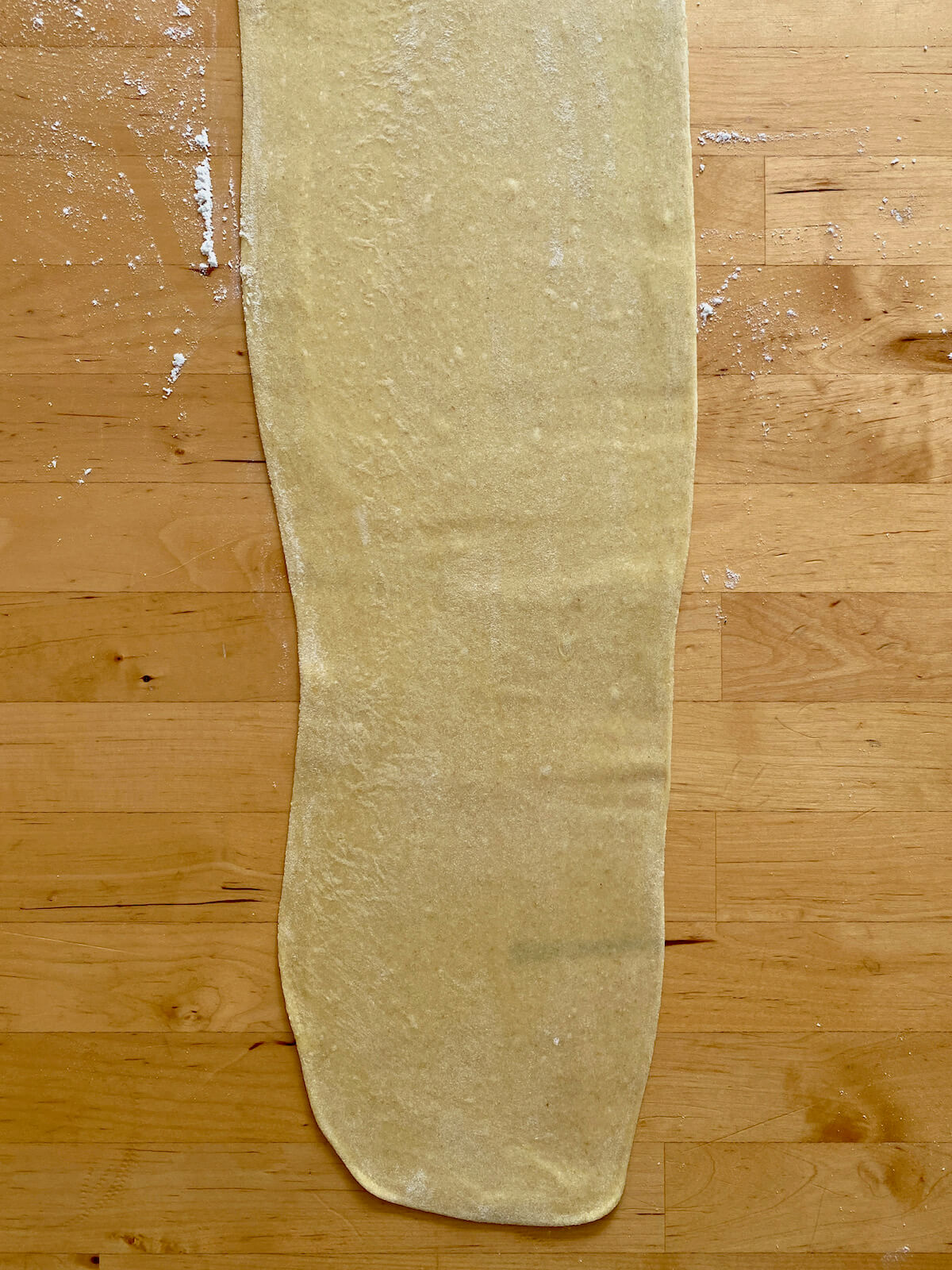


How to Shape Sourdough Pasta Using a Pasta Machine
Shaping sourdough pasta using a pasta machine is a convenient method.
Step 1: Divide the pasta dough. Divide the pasta dough into 4 equal-sized portions. Work with one portion at a time, keeping the remaining pieces covered to prevent them from drying out.
Step 2: Laminate the pasta dough. Take one portion of the dough and flatten it into a rectangular shape with your hands. Dust it lightly with flour to prevent sticking. Adjust the pasta machine to the widest setting (usually marked as "0"). Pass the dough through the machine a couple of times, folding it into thirds each time, until it becomes smooth and pliable.
Step 3: Press the pasta into sheets. Gradually decrease the width setting on the pasta machine while passing the dough through each time. Repeat this process until you achieve the desired thickness. For fettuccine or tagliatelle, a medium thickness setting is commonly used.

Step 4: Shape the pasta. Once the dough reaches the desired thickness, dust it lightly with flour and pass it through the desired pasta cutter attachment on the pasta machine. This can be a fettuccine cutter, spaghetti cutter, or any other desired shape.
Step 5: Repeat with remaining dough. As the pasta is cut, lay it on a floured surface or a drying rack to prevent sticking. You can also sprinkle some flour between layers of pasta to prevent them from sticking together. Repeat the process with the remaining portions of dough.

What Shapes Can I Make With Sourdough Pasta?
Sourdough pasta dough can be used to make any shaped pasta you'd like!
Fettuccine, spaghetti, and sourdough lasagna noodles are all easy to make both by hand and with a pasta maker. Filled pasta, such as ravioli or tortellini, can also be easily made by hand.
If you make fresh pasta often and want to try something new, there are lots of tools and gadgets out there to help you shape your pasta in fun and interesting ways.
How to Cook Sourdough Pasta
How long you cook your sourdough pasta will depend on the final shape and thickness you chose. As a general guideline, here is how to cook fettuccine sourdough pasta.
Step 1: Bring water to a boil. Bring a large pot of well-salted water to a rolling boil.
Step 2: Cook the pasta. Carefully add the sourdough pasta to the boiling water. Gently stir the pasta to prevent it from sticking together. Cook the pasta for about 2-4 minutes or until it reaches your desired level of doneness.
Step 3: Test the pasta for doneness. Test the pasta for doneness by taking a small piece and tasting it. The pasta should be al dente, which means it is cooked but still slightly firm to the bite.
Step 4: Drain the pasta. When the pasta reaches your desired level of doneness, use a colander or pasta strainer to carefully drain the cooked pasta. Remember to save a small amount of the pasta cooking water, as it can be useful for making your sauce stick to the noodles more effectively.
What to Serve With Sourdough Pasta
Like regular pasta, sourdough pasta can be served with all of your favorite sauces, proteins, and vegetables.
When it comes to choosing a flavorful pasta sauce, the possibilities are endless. Classic pairings include creamy alfredo, rich marinara, hearty bolognese, and basil pesto.
For a heartier, more satisfying pasta dish, try pairing this sourdough pasta with your favorite protein. You can enjoy it with whole roasted chicken, pan-seared chicken, blackened salmon, pesto salmon, meatballs, or tender braised beef.
Finally, pair your homemade sourdough pasta with healthy vegetable side dishes like spinach caprese salad, air-fried tomatoes, roasted Brussels sprouts, and sautéed butternut squash.
🍓 Planning a romantic dinner at home? Pair this homemade pasta with chocolate-covered cheesecake strawberries for a quick and easy dessert!
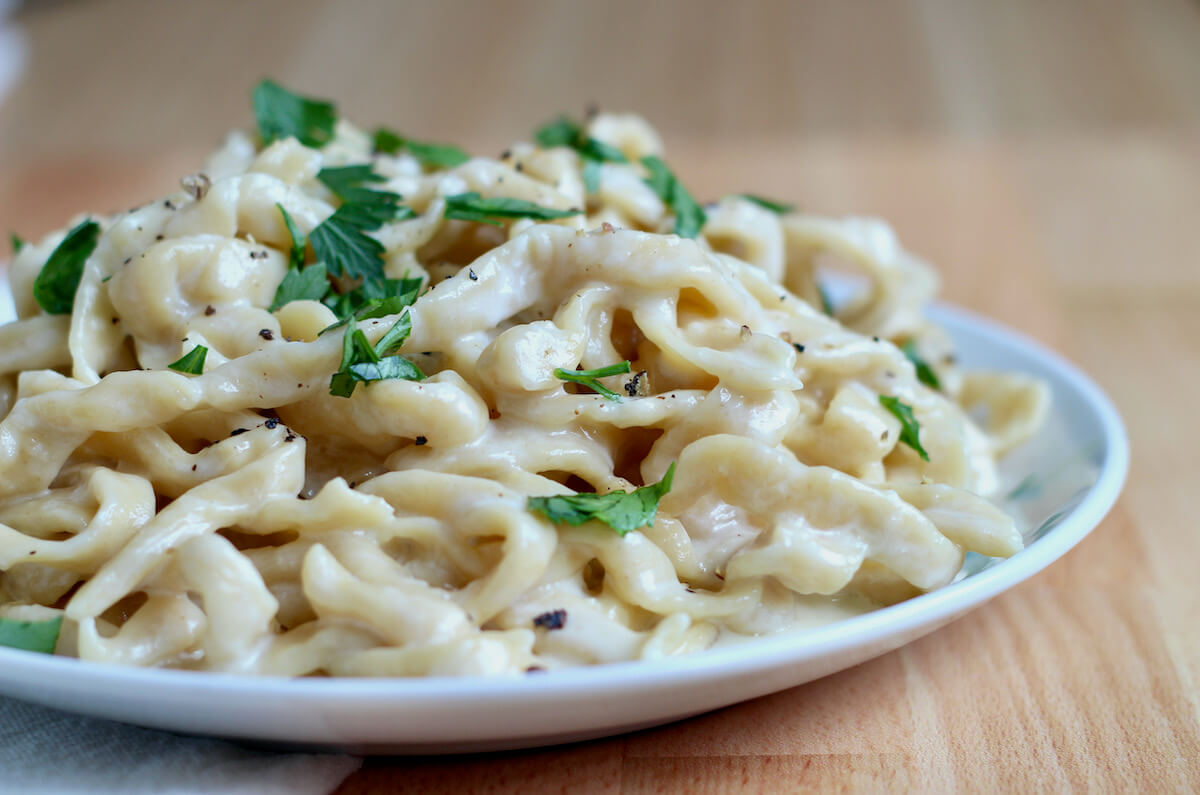
Storage and Reheating
How to Store
Uncooked Pasta
- Refrigerator- Store fresh, uncooked pasta dough wrapped tightly in plastic wrap in the refrigerator for 1-2 days.
- Freezer- Dough balls of uncooked fresh pasta can also be frozen for up to 8 months for longer storage.
- Dried- Store dried pasta in an airtight container or airtight bags in a cool, dry place away from direct sunlight for 2-6 months. Completely dried or dehydrated fresh pasta should not bend or feel soft.
Cooked Pasta
- Refrigerator- Store cooked pasta in an airtight container in the refrigerator for up to 5 days.
- Freezer- Freeze cooked pasta in a freezer-safe container for up to one month. Allow the pasta to thaw in the refrigerator before reheating.
How to Reheat
These methods are for reheating cooked sourdough pasta. If your leftover pasta is frozen, thaw it in the refrigerator overnight before reheating.
- Stovetop- Heat a small amount of butter or olive oil in a saucepan over medium heat. Add the leftover pasta and toss it gently to coat it with the butter or oil. Cook the pasta, stirring occasionally, until it is heated through.
- Microwave- Place leftover sourdough pasta into a microwave-safe dish. Cover the dish with a microwave-safe lid or damp paper towel. Microwave the pasta in 30-second intervals, stirring between each interval, until it is heated evenly.
- Oven- Preheat oven to 300°F. Place the leftover pasta in a baking dish and cover it with aluminum foil. Bake the pasta in the oven for approximately 10-15 minutes, or until it is thoroughly heated. This method works well for leftover pasta that is coated generously with sauce.
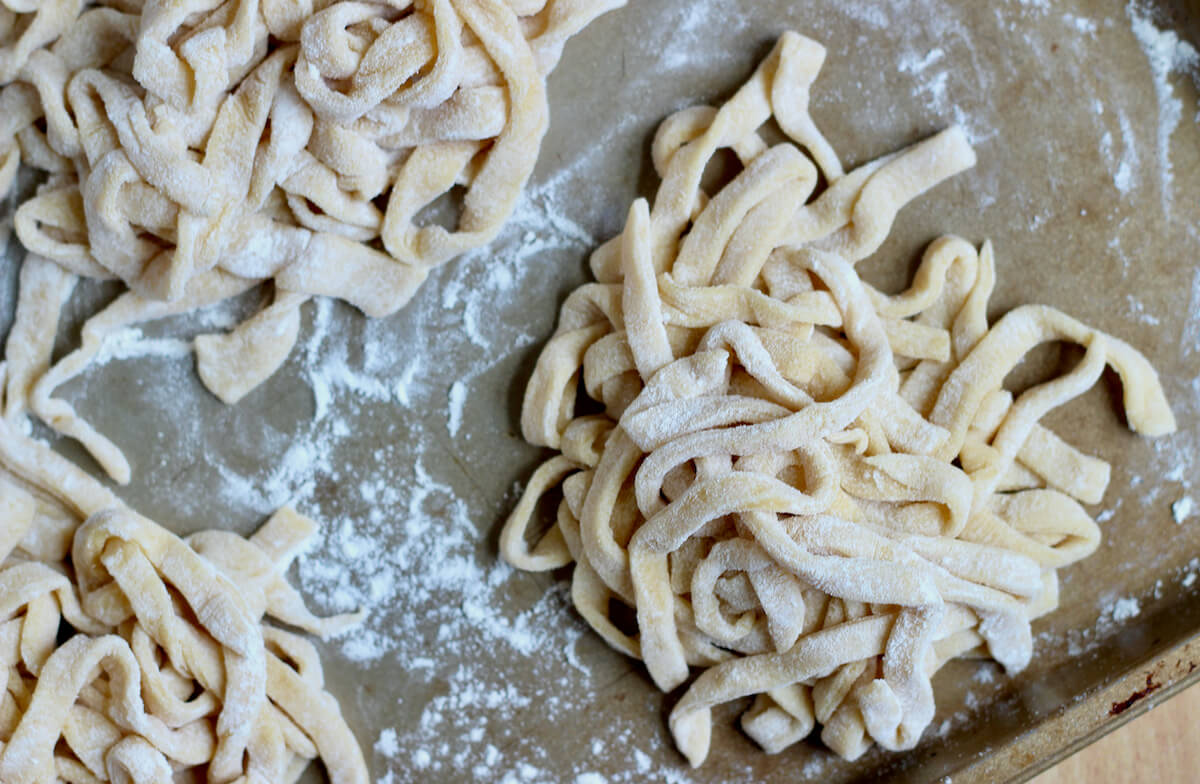
Frequently Asked Questions
Sourdough pasta may be easier to digest for some people. The fermentation process in sourdough breaks down carbohydrates and proteins, including gluten, making them potentially more digestible.
The fermentation process in sourdough helps break down gluten, making it potentially more digestible for some individuals. However, sourdough pasta still contains gluten, so it's not suitable for those with celiac disease or severe gluten intolerance.
While a pasta machine can make the rolling and shaping process easier, it is not necessary. You can roll out the pasta dough with a rolling pin and then cut it into desired shapes using a knife or a pizza cutter.
Yes, you can make sourdough pasta using a food processor or stand mixer. Simply combine the ingredients in the bowl of the food processor or stand mixer and mix until a smooth and elastic dough forms.
Yes, you can dry homemade sourdough pasta for later use. After cutting the pasta into noodles, lay them out in a single layer on a pasta drying rack or a clean surface to air dry for 12-24 hours. Once completely dry, store the pasta in an airtight container in a cool, dry place. It can be cooked directly from its dried state.
Cooking times may vary depending on the thickness and shape of the pasta. Fresh homemade sourdough pasta typically cooks faster than store-bought dried pasta. As a general guideline, cook the pasta in boiling salted water for about 2-4 minutes, or until al dente. Taste test the pasta to determine the desired doneness.
Let's Connect!
Be sure to leave a comment below if you have any questions. You can also connect with me on Instagram, Facebook, Pinterest, or via email at [email protected].
More Homemade Pasta Recipes
📖 Recipe
Sourdough Pasta
Equipment
- Pasta machine optional
- Kitchen scale optional
Ingredients
- 240 grams (about 2 cups) all-purpose flour
- 100 grams (about ½ cup) sourdough starter fed or unfed
- 2 large eggs
- 1 egg yolk
- 4 grams (about 1 teaspoon) kosher salt
Instructions
- In a large mixing bowl, add the all-purpose flour. Create a well in the center of the flour by pressing the bottom of a measuring cup into it.240 grams (about 2 cups) all-purpose flour
- Into the well, add the sourdough starter, eggs, egg yolk, and kosher salt.100 grams (about ½ cup) sourdough starter, 2 large eggs, 1 egg yolk, 4 grams (about 1 teaspoon) kosher salt
- Using a fork, start whisking the ingredients in the well, gradually incorporating more flour as you whisk.
- When the dough becomes too stiff to continue whisking with a fork, transfer the dough and the remaining flour onto a clean work surface.
- Begin kneading the dough with your hands, incorporating the rest of the flour until fully blended. Keep kneading the dough, dusting it with additional flour as needed until it becomes smooth and slightly tacky, but no longer sticky. The dough is ready when you can poke it and it quickly springs back.
- Cover the dough with a bowl, towel, or plastic wrap and let it rest at room temperature for about 30 minutes. Alternatively, you can refrigerate it for up to 24 hours to ferment it.
- *To Make Fettuccine Noodles: Roll out the dough using a rolling pin or a pasta machine until it becomes thin enough for you to see your hand or the counter through it. Cut the pasta sheet into fettuccine noodles using a knife, pizza cutter, or pasta machine.
- In a pot of boiling salted water, cook the homemade fettuccine noodles for approximately 3 minutes. Drain the cooked noodles and serve them with your favorite sauce or toppings. Enjoy!
Notes
- *See blog post for more detailed instructions on how to roll out, cut, and shape pasta by hand or using a pasta machine.
- Adjust flour as needed. The amount of flour needed can vary based on egg size and kitchen humidity. Begin with the specified amount in the recipe and add more gradually if necessary, adjusting as needed for the right dough consistency.
- Storage: Store fresh, uncooked pasta dough in the refrigerator for up to 2 days or in the freezer for up to 8 months. Dried pasta can be stored at room temperature for 2-6 months. Cooked pasta can be stored in the refrigerator for up to 5 days and frozen for up to one month.

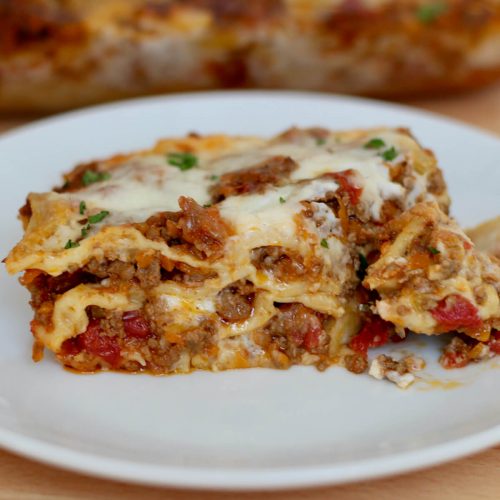
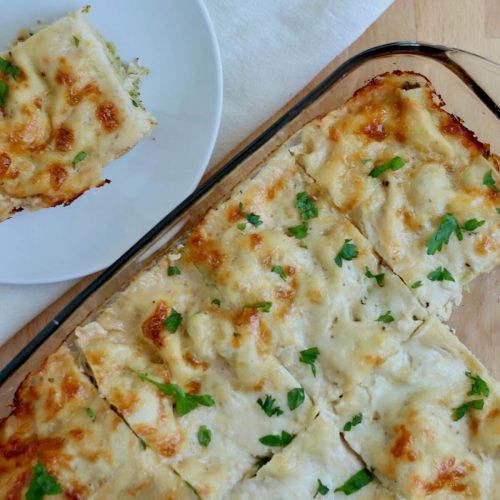
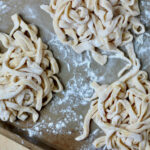
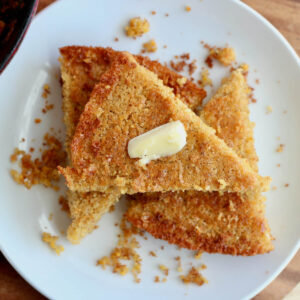
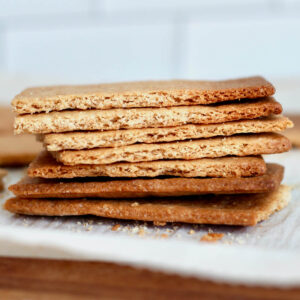

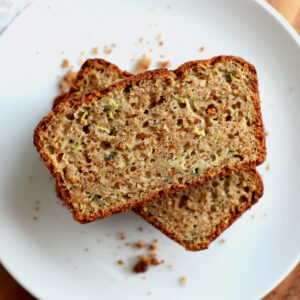
Pat says
This was SO delicious!! Love homemade pasta... especially sourdough!
Ashley Petrie, RDN, LDN says
Hi Pat! So glad you enjoyed it! 🙂